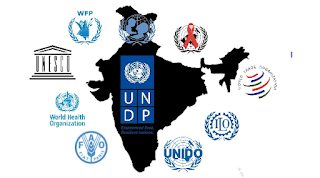Introduction of UN Do you know..?
International organisation since the 19th century was a manifestation of an ideal for World unity.
The history of this organisation is not very long one. The growing complexity of international relations has led to the evolution of international organisations. Through much lacking in the present international organisations, there is no lack of them either in the public arena or in the private one. There unities greatly vary in structure and purpose and in there areas of operation. They are global and regional, specialised and multipurpose, their concern ranging from abstract issues of war to concrete measures of peace-building. There are other which deal with technical measures like..
- Health
- Labour
- Civil aviation
- Problems of refugees
- Women and children.
- The united nation is an international agency called into being states, sustained by states and directed by states.there fore it can hardly be expected to act as an autonomous or independent participant in international affairs, for its very continuance is dependent upon the will of states, and its functional capacity is also ultimately subject to their direction.
- People express disappointment at what the world organisations has not been able to achieve. They entertain hopes about what it can be made to perform without any well-founded conception of what capacity the UN might reasonably be expected to have. It is foolish to be hopeful, cynical or disillusioned, without first exploring the limitations imposed on the organisation by the political context within which it operates.
- The Un is not in any respect a superstate, able to act outside the framework of decisions made by its member. it can serve, but not substitute itself for the efforts of its members governments. The United Nation can therefore be best defined as a state- serving, state-restraining and state-protecting organisation.
- The history of the evolution of international organisation proves that they were pragmatic device to achieve specific objectives, An international organisation assume the continuity of the multi-state system and seeks only to provide an effective means of reconciling the conflicts that emerge from it.
- The progressive development of international organisation represents the increasing introduction of features in international relations which represent the relations characteristic of intra state rather than traditional inter-state relationships. A popular nation existed for a long time that international organisations can be called successful in the degree to which there tasks are increased and their authority strengthened at the expense of the state system which would wither away in proportion to the success of these bodies. However, what is often forgotten is that international agencies represent the efforts of states to further their interests by collaborating in the acceptance of restraint and responsibility and in the curtailment of their sovereign power to the extent that would help a multi-state system to survive. Therefore, the agencies of the UN operating in the security sphere are more properly regarded as instruments of assistance rather then as competitors of states. Their success in building a secure world order alone will lead to the protection of the protection of the multi-state system.

.png)







No comments:
Post a Comment